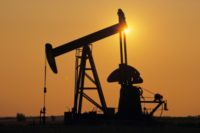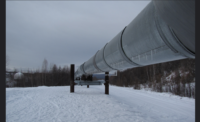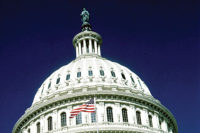Independent Petroleum Association of America (IPAA) President and CEO Barry Russell released a statement in June after attaching support to a letter sent to President Barack Obama by a number of companies, organizations and associations.
In his letter, Russell said, “The U.S. Environmental Protection Agency’s (EPA) draft assessment, once again, shows that hydraulic fracturing is a consistently safe process that has been effectively regulated by the states. While the EPA may point out some processes that warrant increased attention, the industry has been and will continue to work closely with regulators and stakeholders to ensure that natural gas and oil production protects the environment and the safety of nearby communities.
“A continuing question, moving forward, will be EPA’s actual definition of ‘hydraulic fracturing.’ In the draft report, the agency appears to take a very broad definition and scope of fracturing and categorizes some processes that are not part of actual fracturing activity, such as casing and cementing of wells.
“We believe the science and data reaffirm the industry’s safe practices and we will be thoroughly reviewing the report and working with EPA as it creates a final version.”
An excerpt of the letter sent to President Obama on June 19: “You are scheduled to address the nation’s mayors — the lawmakers responsible for the economic prosperity and development in cities across the country. As you do, the undersigned organizations, representing a broad spectrum of the economy, write to express our deep concern with the Environmental Protection Agency’s (EPA) proposed rule to lower the National Ambient Air Quality Standard (NAAQS) for ground-level ozone. In September 2011, you instructed the Administrator of the EPA to withdraw the-then pending ground-level ozone rule, citing the importance of reducing regulatory burdens and uncertainties as the economy struggled to recover from recession.
“The concerns you identified in 2011 still very much persist for our organizations today and we fear that the costs, delays and barriers to growth associated with a new ozone rule will have a severely negative impact on the U.S. economy, our international competitiveness and jobs. The EPA’s proposed ozone rule could be the most expensive regulation in U.S. history. It is being contemplated at a time when air quality, which is better than it has been in decades, will continue to improve due to yet-to-be implemented investments whose benefits have yet to be fully realized. In fact, ozone levels have fallen 33 percent since 1980, and the current standard of 75 parts per billion (ppb), set in 2008, is just now being implemented. In addition, regulations and investments to improve fuel economy, increase energy efficiency and reduce emissions from stationary and mobile sources will drive further air quality improvements over the next decade, and beyond.”



